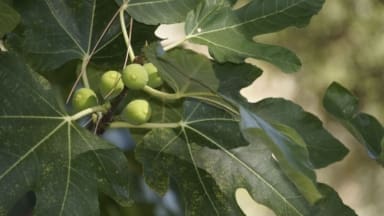
As in South Yorkshire and North Derbyshire, the banks of Sheffield’s River Don, boast mature fig trees – some about 70-years-old, which owe their existence to human appetite, imperfect sewage and the steel industry.
According to the article, the steel workers had a particular penchant for fig biscuits, the seeds of which would eventually find their way through the sewage system, which regularly overflowed into the River Don (Porter Brook and also River Sheaf) after heavy storms. As the rivers were used to cool the steelworks, the waters presented the fig seeds with the perfect micro-climate conditions at a steady 20-23 degrees. Happily tucked in the sewage-rich river silts, the seeds germinated and grew into the proud specimens seen on the banks today. The trees grew and suckered happily, becoming an emblem of Sheffield’s industrial past.
An article in ‘My Kind Of Town Nostalgic Reflections Of Bygone Sheffield’ (no longer in print) by Professor Ian Rotherham clarified that the fig trees were discover by local naturalist and amateur industrialist Richard Doncaster. Doncaster, along with local botanist Margaret Shaw, botanists from the Sorby Natural History Society, Dr Oliver Gilbert (Sheffield University’s Urban Ecologist) and Rotherham (researcher & ecologist), had surveyed the trees, ensured their usual heritage was confirmed and registered them to ensure their protection in 1991. Notably, the first time that was achieved for a non-native species.
The main sites to see the fig trees are along the River Don on the riversides towards Hillsborough to Meadowhall and further downstream in Rotherham – but can also be found all the way down to Doncaster.

